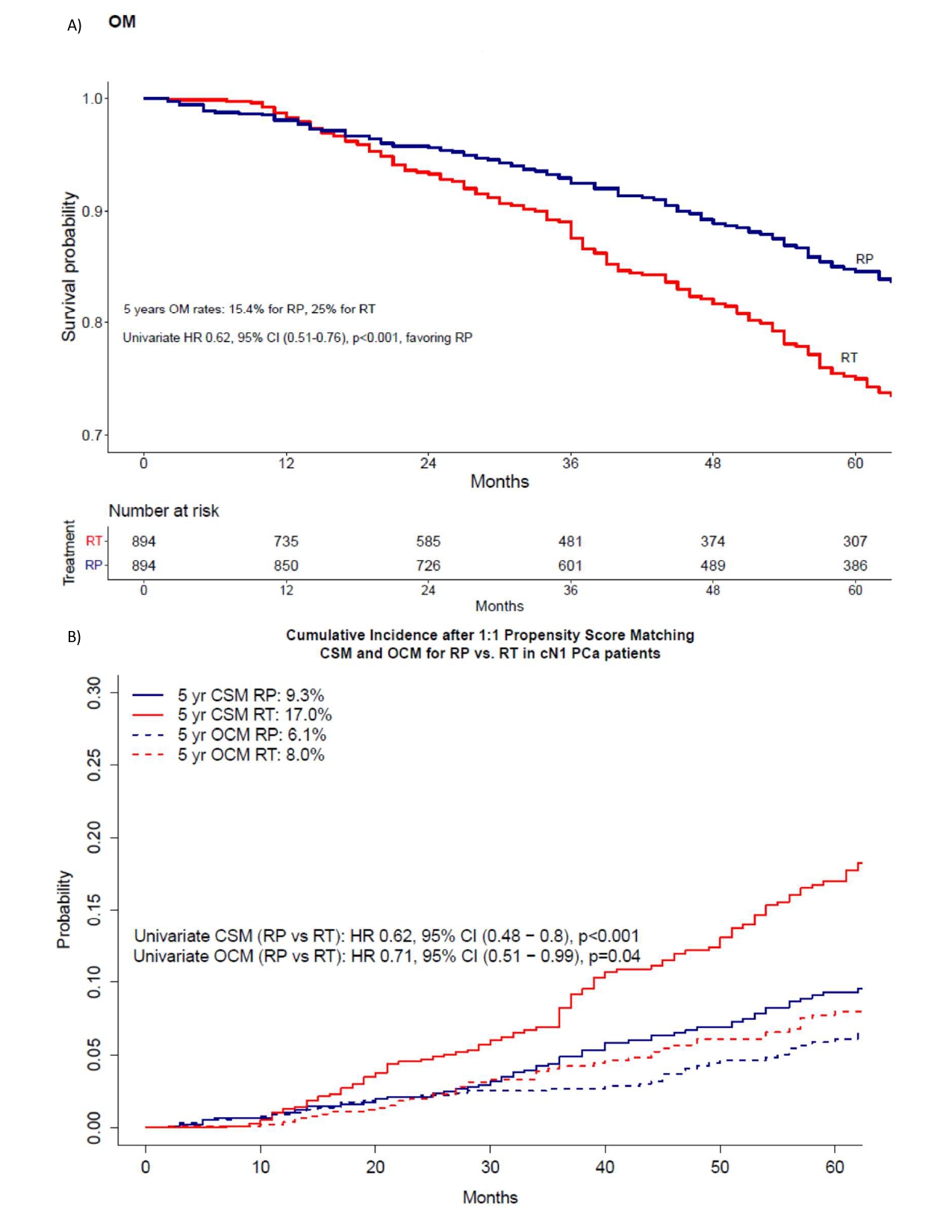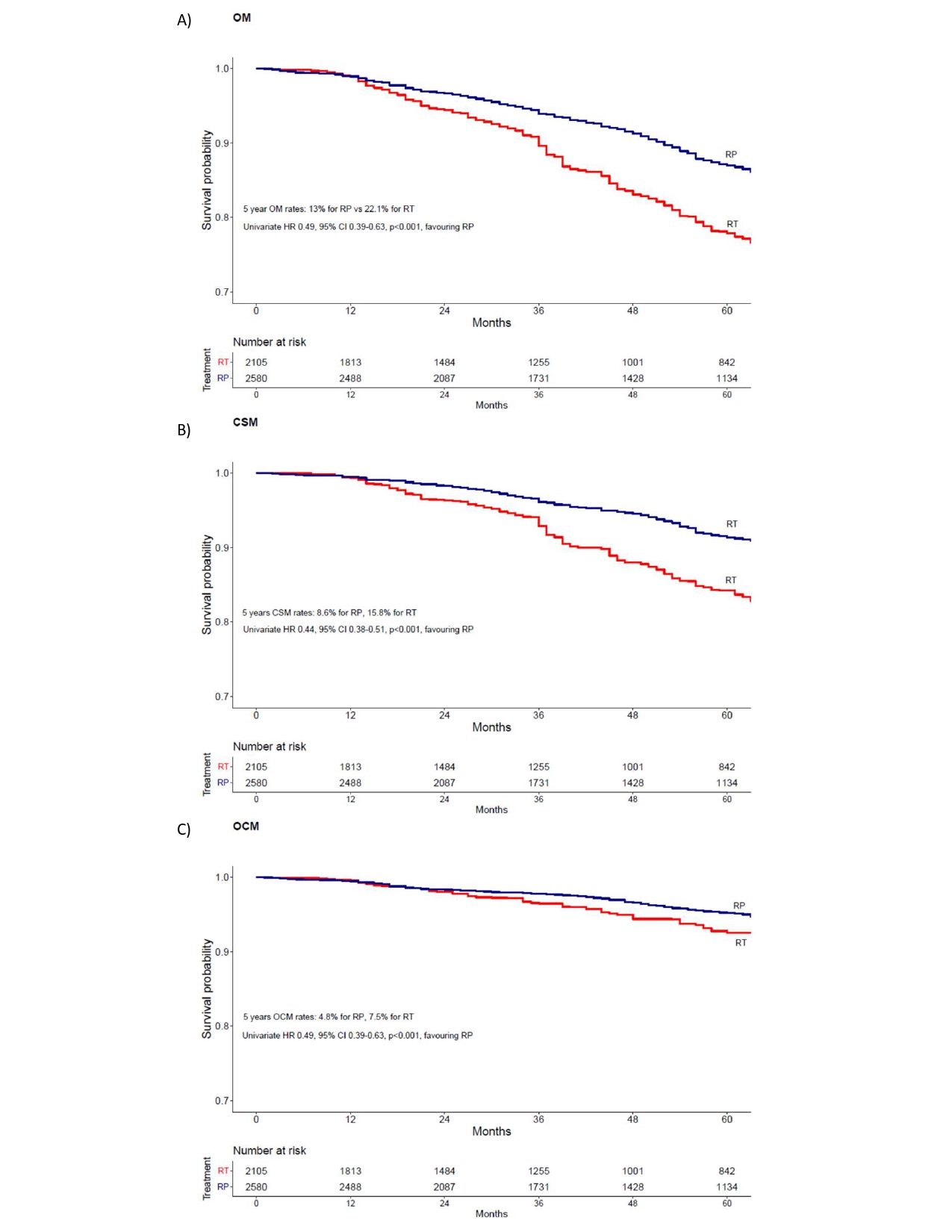Back
Poster, Podium & Video Sessions
Podium
PD60: Prostate Cancer: Localized: Surgical Therapy V
PD60-04: Survival after radical prostatectomy vs. Radiation therapy in clinical node-positive prostate cancer
Monday, May 16, 2022
1:30 PM – 1:40 PM
Location: Room 245
Francesco Chierigo*, Genova, Italy, Christoph Würnschimmel, Hamburg, Germany, Rocco Simone Flammia, Rome, Italy, Benedikt Horlemann, Montreal, Canada, Gabriele Sorce, Milan, Italy, Benedikt Hoeh, Frankfurt, Germany, Zhe Tian, Fred Saad, Montreal, Canada, Markus Graefen, Hamburg, Germany, Michele Gallucci, Rome, Italy, Alberto Briganti, Francesco Montorsi, Milan, Italy, Felix K.H. Chun, Frankfurt, Germany, Shahrokh F. Shariat, Vienna, Austria, Guglielmo Mantica, Maro Borghesi, Nazareno Suardi, Carlo Terrone, Genova, Italy, Pierre I Karakiewicz, Montreal, Canada

Francesco Chierigo
IRCCS Policlinico San Martino Hospital - University of Genova
Podium Presenter(s)
Introduction: To compare overall mortality (OM), cancer specific mortality (CSM) and other cause mortality (OCM) rates between radical prostatectomy (RP) vs. radiotherapy (RT) in clinical node positive (cN1) prostate cancer (PCa).
Methods: Within Surveillance, Epidemiology, End Results (SEER) (2010-2016), we identified 4,685 cN1 PCa patients, of whom 3,589 (76.6%) vs 1,096 (24.4%) were treated with RP vs RT. After 1:1 propensity score matching (PSM) (age, PSA, T stage and biopsy Gleason grade group), Kaplan-Meier plots and Cox regression models (Figure 1) tested the effect of RP vs RT on OM, while cumulative incidence plots and competing-risks regression models addressed CSM and OCM between RP and RT patients. All analyses were repeated after inverse probability of treatment weighting (IPTW, Figure 2).
Results: Overall, RT patients were older, harbored higher PSA values, higher clinical T and higher Gleason grade groups. PSM resulted in two equally sized groups of 894 RP vs. 894 RT patients. After PSM, 5-year OM, CSM and OCM rates were respectively 15.4 vs 25%, 9.3 vs. 17%, and 6.1 vs 8% for RP vs RT (all p<0.001) and yielded respective multivariate HRs of 0.63 (0.52-0.78, p<0.001), 0.66 (0.52-0.86, p<0.001), 0.71 (0.5-1.0, p=0.05), all favoring RP. After IPTW, Cox regression models yielded HR of 0.55 (95% CI 0.46-0.66), 0.54 (0.46-0.68) and 0.58 (0.43-0.77) for respectively OM, CSM and OCM, all favoring RP (all p<0.001).
Conclusions: RP may hold a CSM advantage over RT in cN1 PCa patients.
Source of Funding: no funding


Methods: Within Surveillance, Epidemiology, End Results (SEER) (2010-2016), we identified 4,685 cN1 PCa patients, of whom 3,589 (76.6%) vs 1,096 (24.4%) were treated with RP vs RT. After 1:1 propensity score matching (PSM) (age, PSA, T stage and biopsy Gleason grade group), Kaplan-Meier plots and Cox regression models (Figure 1) tested the effect of RP vs RT on OM, while cumulative incidence plots and competing-risks regression models addressed CSM and OCM between RP and RT patients. All analyses were repeated after inverse probability of treatment weighting (IPTW, Figure 2).
Results: Overall, RT patients were older, harbored higher PSA values, higher clinical T and higher Gleason grade groups. PSM resulted in two equally sized groups of 894 RP vs. 894 RT patients. After PSM, 5-year OM, CSM and OCM rates were respectively 15.4 vs 25%, 9.3 vs. 17%, and 6.1 vs 8% for RP vs RT (all p<0.001) and yielded respective multivariate HRs of 0.63 (0.52-0.78, p<0.001), 0.66 (0.52-0.86, p<0.001), 0.71 (0.5-1.0, p=0.05), all favoring RP. After IPTW, Cox regression models yielded HR of 0.55 (95% CI 0.46-0.66), 0.54 (0.46-0.68) and 0.58 (0.43-0.77) for respectively OM, CSM and OCM, all favoring RP (all p<0.001).
Conclusions: RP may hold a CSM advantage over RT in cN1 PCa patients.
Source of Funding: no funding



.jpg)
.jpg)